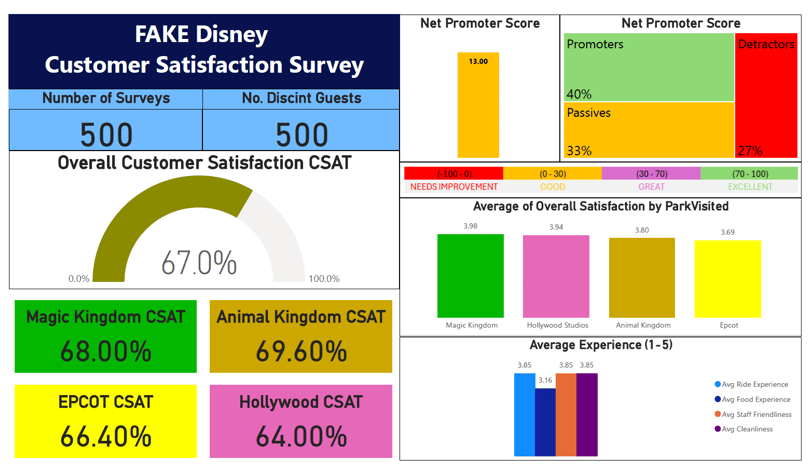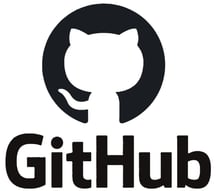




Efficient Cybersecurity Compliance Platform
Challenge: "The IRS introduced new cybersecurity guidelines requiring small to mid-size accounting firms to implement comprehensive Written Information Security Plans (WISPs). These firms often lack the resources and expertise to navigate the complexities of cybersecurity regulations (referencing IRS, NIST, and FTC guidelines), creating a significant compliance burden and increasing their vulnerability to cyber threats. I recognized this gap in the market as an opportunity to provide a targeted solution and build a sustainable business."
Approach: "I took a strategic approach to simplify WISP compliance. I conducted an in-depth analysis of the IRS requirements and related guidelines (NIST, FTC) to develop a comprehensive yet accessible solution. My strategy focused on breaking down complex requirements into manageable modules, delivered through a user-friendly platform that guides accountants through the implementation process. Key to this approach was identifying a strong product-market fit: a clear need among a defined customer segment with a solution that directly addresses their pain points."
Solution: "WISPNEST delivers a modular video-based learning experience, coupled with assessment questionnaires. Each module explains key WISP concepts, and the questionnaires evaluate the accountant's implementation status. The platform automates the assessment process using a webhook that triggers a GCP cloud function. This function evaluates the questionnaire data, provides personalized feedback with remediation steps, and stores the data securely. Upon completion of all modules, WISPNEST generates a comprehensive, tailored Written Information Security Plan document, delivered directly to key stakeholders within the accounting firm. The business model is designed for scalability and recurring revenue, ensuring long-term sustainability."
Results: "WISPNEST has successfully addressed the critical need for simplified cybersecurity compliance in the tax industry. By providing a clear, step-by-step solution, WISPNEST empowers small and mid-size accounting firms to effectively meet IRS requirements, reducing their risk and saving them valuable time and resources. This has translated into [Quantify customer acquisition, revenue growth, or other business success metrics if possible], validating the product-market fit and the strength of the business model."

Solution: The project successfully delivered a fully operational Odoo Enterprise platform serving as WISPNEST's new integrated front-end. This involved:
► Comprehensive Odoo Implementation: Configuring core modules including Website, eCommerce, eLearning (Customer Portal), CRM, Email Marketing, Invoicing, and Calendar (for booking).
► Seamless Data Migration: Successfully migrated critical customer and legacy product data from GHL to Odoo, ensuring data integrity.
► Robust Cloud Integration: Established and validated API/webhook integrations between Odoo and existing Google Cloud Platform (GCP) services, enabling automated data analysis and customer feedback mechanisms.
► Dynamic Product Management: Configured the complex new product strategy within Odoo, including 5 distinct paying products and 1 free product, alongside a robust system for managing legacy product offerings for existing customers.
► Optimized User Experience: Implemented new website pages, forms, and surveys within Odoo, ensuring an intuitive and responsive customer journey.
► Advanced Automations: Replicated and enhanced key business automations from GHL within Odoo to streamline lead nurturing, sales workflows, and operational tasks.
► Strategic DNS Management: Implemented a sophisticated DNS strategy using Cloudflare, ensuring secure (HTTPS) and reliable access via both naked and www domains, while enabling a phased shutdown of the legacy GHL environment.
Results: The successful migration to Odoo has significantly transformed WISPNEST's operational landscape. We achieved a substantial reduction in monthly operational costs by enabling the cancellation of the GoHighLevel subscription. The new Odoo platform provides enhanced scalability and versatility, offering greater control over functionalities and empowering rapid adaptation for future product expansion and feature development. Operational efficiency has seen notable improvement through Odoo's integrated workflows, reducing manual tasks and system complexities. Furthermore, the migration ensured uninterrupted service and an improved, more stable customer experience with secure access and reliable platform performance. This complex project, managed and executed primarily as a solo endeavor, demonstrably highlights my capabilities in full-lifecycle project management, strategic technical implementation, and effective vendor/resource coordination under tight constraints. (Quantify specific achievements here if possible, e.g., "resulting in a 30% reduction in platform costs," "improving site uptime to 99.9%," "enabling the launch of 2 new product lines within weeks post-migration").
Approach: To address these multifaceted challenges, I initiated a strategic migration project to transition WISPNEST's front-end and core operational processes to Odoo Enterprise. My approach was rigorously structured around PMI Project Management principles, providing a robust framework for a largely solo implementation. I began with meticulous requirements gathering to ensure comprehensive replication of critical GHL functionalities, precise definition of new product offerings, and seamless integration with our existing GCP backend. The project adopted a hybrid methodology, utilizing predictive planning for foundational elements like data migration and overall baselines, while employing agile sprints for iterative Odoo module configuration and product setup. Recognizing the inherent resource constraint, a dynamic resource strategy was implemented, leveraging my internal capacity for core tasks with a pre-defined contingency for outsourcing specialized development needs on a gig-by-gig basis via Fiverr. Furthermore, I engineered a phased domain migration strategy, including a robust Cloudflare setup, to ensure seamless SSL provision and redirect management, minimizing disruption.
Challenge: WISPNEST's critical customer-facing operations, including website, sales funnels, CRM, and customer portal, were entirely dependent on GoHighLevel (GHL). This reliance presented significant challenges: escalating monthly operational costs, persistent technical limitations (e.g., intermittent 404 errors) impacting user experience, and a lack of granular control hindering the strategic expansion of our product offerings. Furthermore, a planned re-alignment of WISPNEST's product lineup from 3 paying products to a more complex 5-paying and 1-free tier (alongside managing legacy products) demanded a more versatile and cost-effective platform capable of integrated functionality. All of this had to be achieved while maintaining business continuity, ensuring customer experience, and adhering to an extremely aggressive go-live deadline, with myself as the primary (often sole) project manager and implementer.
Digital Transformation, WISPNEST Platform Migration to Odoo

Enterprise System Transformation, PeopleSoft CRM to ServiceNow Migration
Challenge: A large global financial services organization faced significant operational challenges with its legacy CRM system, including limitations in data accuracy, process inefficiencies, and a complex case workflow that hindered seamless client interactions and internal operations. The critical need was to transition from this outdated system to a modern, more efficient platform to improve data integrity, streamline processes, and enhance overall user satisfaction. This required navigating complex data structures and adapting workflows to a new system while minimizing disruption.
Approach: As Product Owner and Project Lead, I spearheaded the implementation phase of this strategic migration. My approach began with extensive collaboration across various teams within the division to meticulously collect and prioritize requirements for the new system. I led the critical efforts of data cleanup and mapping legacy data to the new ServiceNow data architecture, ensuring data integrity and a smooth transition. Furthermore, I worked closely with cross-functional teams to analyze ServiceNow's inherent workflows and strategically adapt them to align seamlessly with our division's specific operational needs and client service processes. This involved managing the SDLC from inception to deployment, ensuring that the implementation delivered high-quality software solutions.
Solution: The solution was the successful migration from the legacy CRM to ServiceNow, a robust and modern platform. This transition significantly improved data accuracy through meticulous cleanup and precise data mapping. Process efficiency was enhanced by streamlining workflows within ServiceNow, leading to a more intuitive user experience and simplified client interactions. The new platform provided improved capabilities for case management and reporting, directly addressing the inefficiencies of the previous system and supporting better operational insights. The implementation focused on delivering a system that not only met technical requirements but also genuinely improved business efficiency and application utility for all users.
Results: The successful migration resulted in significant improvements across critical business functions. We achieved enhanced data accuracy and accessibility, which streamlined operations and supported data-driven decision-making. Process efficiency was markedly improved, reducing manual efforts and accelerating service delivery. User satisfaction among internal teams and client-facing personnel increased due to a simplified, more intuitive platform and enhanced case workflow. This project significantly contributed to the overall operational efficiency and strategic success of client service initiatives.

Customer Experience Analytics: Disney Theme Park Survey Analysis
Challenge: In the competitive entertainment industry, understanding and acting on customer feedback is paramount for maintaining brand loyalty and driving continuous improvement. Disney theme parks, known for their focus on guest experience, require robust analytical capabilities to transform raw customer survey data into actionable insights. The challenge was to take unstructured and semi-structured survey responses, systematize them, derive key performance indicators (KPIs) like Customer Satisfaction (CSAT) and Net Promoter Score (NPS), and present these insights in a clear, actionable format for business stakeholders, while ensuring the underlying data processes are meticulously documented for ETL development and data governance.
Approach: My approach focused on creating a comprehensive data pipeline from raw survey data to actionable insights, emphasizing data integrity and clear communication for technical implementation. I began by designing a structured customer survey dataset, simulating real-world feedback from Disney theme park visitors. This involved defining relevant survey questions and rating scales for various aspects of the park experience (rides, food, staff, cleanliness, overall satisfaction, and likelihood to recommend).
Next, I meticulously validated and sampled the data using SQL Server Management Studio (SSMS) and Excel to ensure data quality and integrity. This iterative process allowed me to understand the data's nuances and identify potential anomalies early on. A critical part of this phase was defining precise business logic for key customer experience metrics (CSAT and NPS), translating these into clear, executable requirements for ETL developers. The emphasis was on creating robust, repeatable calculations that could be easily understood, implemented, and tested by a technical team.
Solution: The solution delivered a fully traceable and analyzable customer experience data model.
1) Data Systematization: A Disney_Survey dataset was created and loaded into a SQL Server database, providing a clean, structured foundation for analysis. This step ensured data consistency and readiness for downstream processing.
2) KPI Definition & Calculation:
Customer Satisfaction (CSAT): Defined as the percentage of "Satisfied" or "Very Satisfied" responses (scores 4 or 5 on a 5-point scale) from the OverallSatisfaction metric.
Net Promoter Score (NPS): Calculated by categorizing LikelihoodToRecommend scores (0-10) into Promoters (9-10), Passives (7-8), and Detractors (0-6), then subtracting the percentage of Detractors from the percentage of Promoters.
Average Experience Ratings: Calculated average scores for RideExperienceRating, FoodExperienceRating, StaffFriendlinessRating, and CleanlinessRating to pinpoint specific areas for improvement or excellence.
3) Power BI Dashboard Development: These KPIs were then transformed into intuitive visualizations within a Power BI dashboard. This included:
Card visuals for overall CSAT and NPS scores, providing immediate high-level insights.
Gauge charts for CSAT, allowing quick assessment against target satisfaction levels.
100% Stacked Column charts for NPS, visually breaking down the proportion of Promoters, Passives, and Detractors, offering deeper understanding beyond a single score.
Bar charts for average experience ratings, enabling easy comparison across different park aspects.
4) Documentation & Governance: A dedicated GitHub repository was established to house comprehensive project documentation. This includes the raw dataset, detailed SQL scripts for data validation, precise DAX formulas for Power BI measures, and most importantly, clear, concise instructions for ETL developers. This documentation outlines data sources, transformation logic, data types, and expected outputs, ensuring seamless implementation, maintainability, and adherence to data governance best practices.
Results: This project successfully transformed raw customer survey data into a powerful analytical tool. By systematizing the data and defining clear KPIs, it provides Disney theme park stakeholders with real-time, actionable insights into guest satisfaction and loyalty. The structured approach ensures data integrity, while the robust documentation facilitates efficient collaboration with ETL developers, minimizing misinterpretations and accelerating deployment. This demonstrates a strong capability in data-driven decision-making, meticulous process documentation, and effective cross-functional communication—all vital for a Product and Technical Business Analyst role.




